Best way to grow strawberries:Harvest strawberries (Grow your own strawberries)
Growing strawberries in organic cultivation. The strawberries I grew from seedlings are now ready for harvest. The variety is Houkou-wase strawberry (one season bearing strawberry). Japanese one season bearing strawberry is a similar species to the june bearing strawberry of overseas.
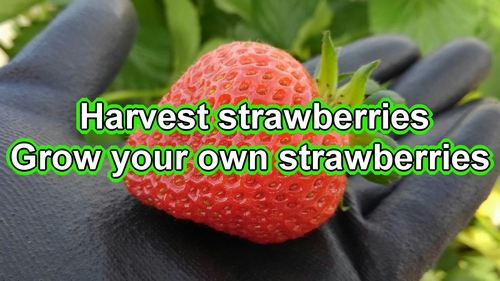
Japanese Houkou-wase strawberries are a disease-resistant variety suitable for home gardening, and their cultivation is relatively straightforward. I believe it’s a variety that even beginner strawberry growers can easily cultivate. I am growing it in the field using open-field cultivation, and even with organic farming without pesticides, it has thrived without getting sick.
Growing strawberries for beginners (Best way to plant strawberries)
I started cultivating strawberries in late September of last year. The “one season bearing = june bearing" strawberries are typically planted in the fall, so I do the soil preparation around this time. For organic cultivation without pesticides, the best compost for strawberries is a combination of cattle manure compost and chicken manure.
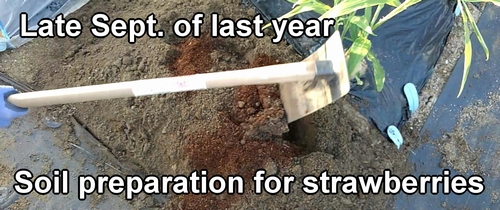
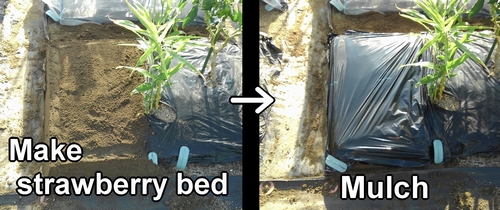
The best time to plant strawberry seedlings is around mid-October. Organic fertilizers such as cow manure and chicken manure take about 3 weeks to 1 month to integrate with the soil, so the best time to plant strawberries is around October. The key point in planting seedlings is strawberry runners. Planting the runners towards the inside of the strawberry bed makes cultivation easier.
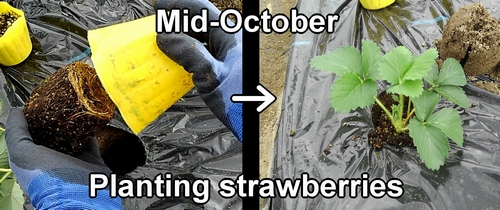
Strawberry fruit tends to grow more on the opposite side of the strawberry runners, so planting the runners inward makes it easier to harvest the fruit on the aisle side. The strawberry fruiting season usually starts from mid-April onwards. The cultivation period until harvest strawberries is about 7 months. Among home garden vegetables, strawberries have a relatively long cultivation period.
I performed strawberry plant care for winter preparation in late November. I removed the black mulch covering the beds and exposed the strawberries to the cold of winter.
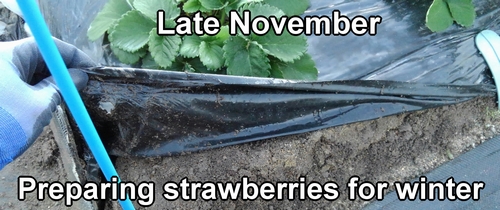
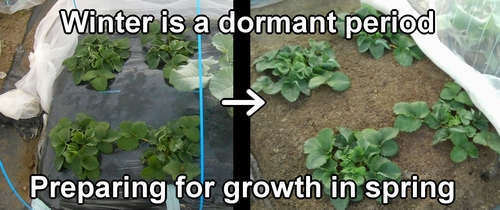
In late December, I performed a light pruning of the strawberries. (Early buds and flowers can hinder the growth in spring.)
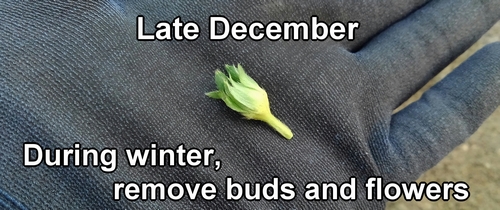
The strawberry’s additional-fertilizing period was in mid-January after the new year. The fertilizer is organic chicken manure. The amount of additional-fertilizing is 10g (about 1/3oz) per strawberry plant.
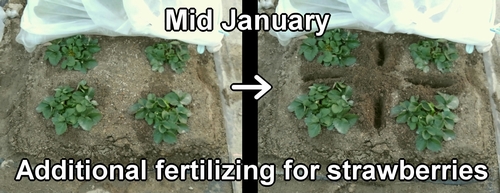
From late January, we resumed mulching the strawberry beds. Covering the beds to retain warmth, raise soil temperature, and promote strawberry growth.
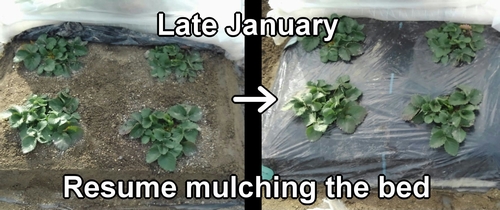
In late February, as the strawberry buds increased, we pinched off some of them since we want the flowers to bloom from March onwards.
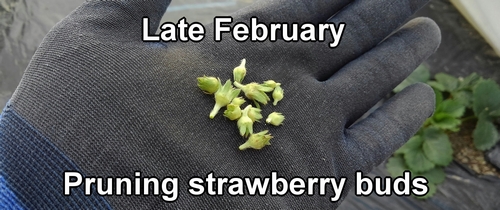
In mid-March, caring for strawberry plants is preparation for harvesting. To prevent the strawberries from getting damaged, I installed non-woven fabric around the plants.
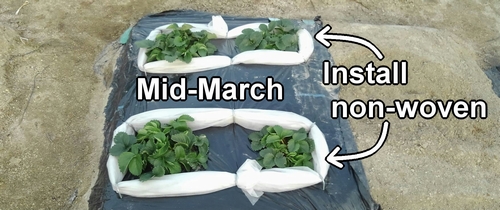
The number of strawberry flowers increased, and I performed hand pollination with a brush at the end of March.
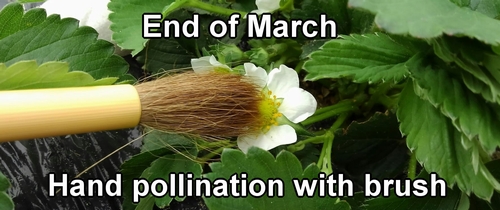
In mid-April, as the strawberry fruits began to grow larger, I took measures against crows using bird netting. For strawberries grown in open fields, measures are necessary as they become ripe and attract insects and animals. Especially crows are cunning, so we need to be vigilant.
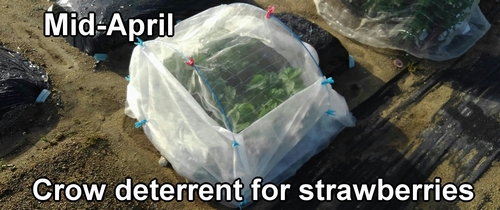
Harvest strawberries (It’s harvest season for organic strawberry plants)
The strawberries I’ve been cultivating since last October have reached the harvest season. However, this time, there was only one berry for the harvest. Although there was only one berry, the strawberry is quite large. I think it’s a reasonably good result for the first harvest.
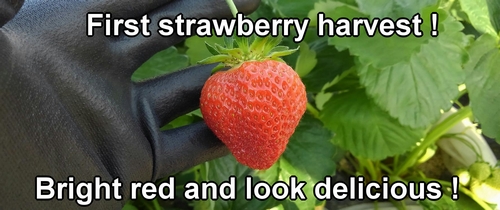
The strawberry harvest has just begun. Most of the strawberries are still ripening, so I will wait for them to turn red and harvest them gradually. I am looking forward to the next harvest.
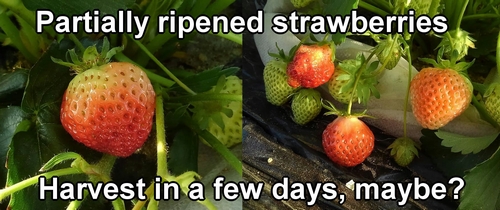
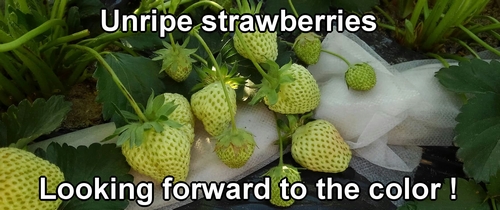
Following is the video for how-to. English subtitles are available.
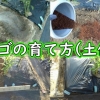


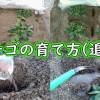
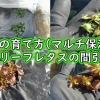


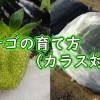





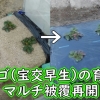


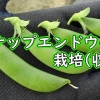

Discussion
New Comments
No comments yet. Be the first one!